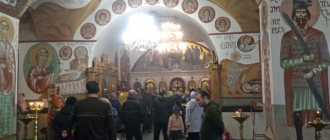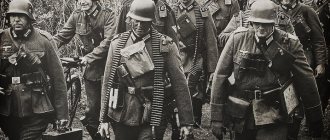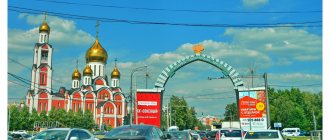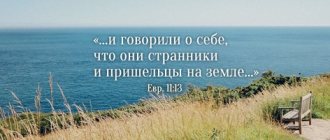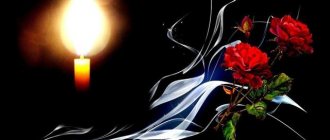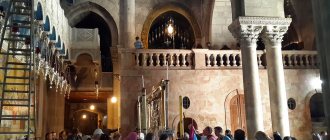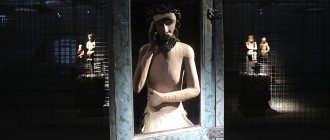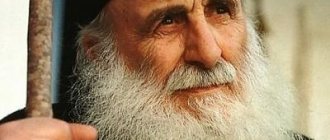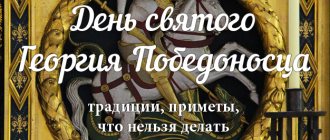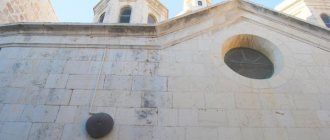The “Wall of Sorrow” will begin to be installed on August 6 at the intersection of Sakharov Avenue with the Garden Ring, reports the Moscow Agency. The author of the six-meter memorial to the victims of political repression, Georgy Frangulyan, owns many monuments standing around Moscow.
Photo: portal of the mayor and government of Moscow
The editors of m24.ru recalled five iconic works of the sculptor, who once admitted that he would happily design a new microdistrict in some South Butovo.
Bulat Okudzhava
Photo: portal of the mayor and government of Moscow
A piece of Arbat from the 1960s appeared in Moscow in May 2002. On the sculpture of Bulat Okudzhava emerging from the Arbat courtyard - this is where the bard spent his childhood - Frangulyan worked together with the architect Igor Popov.
On the cobblestone platform there are two arches with quotes from Okudzhava’s works; he himself emerges from one of them, leaving a table, benches and his own bronze shadow behind him. All this is an attempt to recreate the atmosphere of the habitat of the generation of the Soviet intelligentsia during the Khrushchev Thaw.
Where to look: at the intersection of Arbat Street and Plotnikov Lane
Historical reference
Even today there is no exact information about how many people died during the years of repression. Mass arrests began in the late 20s and ended only after Stalin's death. The worst period was 1937-1938. Then about 30 thousand people were sentenced to death.
Victims of repression include not only those who were convicted under political charges and sentenced to death. The wives, husbands, and relatives of those arrested were sent to the camps. Children under 15 years of age were to be placed in cities far from Moscow, Leningrad, Minsk, Kyiv, and Tiflis.
Boris Yeltsin (tombstone)
Photo: m24.ru/Alexander Avilov
A year after the death of the first president of Russia, Boris Yeltsin, a sculptural tombstone appeared on his grave at the Novodevichy cemetery. The tricolor is made of three types of stone: white marble, blue Byzantine mosaic and red porphyry.
Frangulyan assembled the monument from blocks - each weighing about 15 tons. The design is stable due to the fact that the blocks touch over a sufficient area. This is exactly how the ancient Greeks built. The tombstone was unveiled on April 23, 2008.
Where to look: section 6 of the Novodevichy cemetery. Its official address is Luzhnetsky proezd, building 2.
"Solovetsky Stone" and other monuments
During the perestroika years, the topic of victims of repression became quite discussed. Now is the most opportune time to install a monument. The monument unveiled at Lubyanka is called “Solovetsky Stone”. It is made of granite brought from the territory of the former camp. The grand opening took place on October 30, 1990. Where mass executions took place in the 1930s, sculptural compositions, walls of memory, chapels, and memorial plaques were subsequently installed. One of them - “Mask of Sorrow” - is located in Magadan. A memorial plaque with the inscription “Last Address” is installed in many cities of Russia.
Joseph Brodsky
Photo: website of sculptor Georgy Frangulyan
The poet Joseph Brodsky and 13 other faceless people stand in the park on Novinsky Boulevard. According to the author, if you translate the numbers into characters, it turns out that 93% of the losers account for 7% of the successful people. It is these 7% that the Brodsky monument glorifies.
During installation in 2011, workers almost ruined Georgy Frangulyan’s work - they decided to clean the monument and went a little overboard. “There is a patina on the figures that goes into the image of this monument. And suddenly I saw how they were being cleaned; the restorers decided that this was a defect, this was a layer of time. I managed to stop and restore it, otherwise I would have arrived and all the figures would have been gold,” the sculptor told the Moscow 24 TV channel.
The monument to the poet who accepted American citizenship in exile stands opposite the American embassy.
Where to look: in the park between houses 22 and 28 on Novinsky Boulevard.
Ideal "coexistence"
The museum was originally created and has always positioned itself as an independent, public one. The property belonged and continues to belong to the state, although it was provided to the museum for perpetual use free of charge. Money for the maintenance and financing of the museum came from budget funds (not all, but most of it), and the authorities did not interfere with the content.
"Perm-36" - a monument to the inglorious past
White City
Photo: M24.ru/Vladimir Yarotsky
Seven gigantic stainless steel figures appeared in 2014 near the Belorusskaya metro station between business skyscrapers.
According to the author, the composition is “the first attempt to install a sculptural composition in our city that is not an illustration of a specific event and is not dedicated to a specific person. These are the people in the city"
They were installed in order to create a more comfortable environment for passersby. “Sculptures are a kind of transitional scale between a person and the architecture around him,” the sculptor said in a long interview with m24.ru.
At the same time, Frangulyan said that if “the sculptures take root, perhaps their number will increase to nine in the future.” So far this has not happened.
Where to look: between skyscrapers on Butyrsky Val, 10.
Opening of the memorial to victims of political repression “Wall of Sorrow”
Opening of the memorial to victims of political repression “Wall of Sorrow”
In addition, the ceremony was attended by Patriarch of Moscow and All Rus' Kirill Kirill Patriarch of Moscow and All Rus', Mayor of Moscow Sergei Sobyanin Sobyanin Sergei Semyonovich Mayor of Moscow, member of the Federation Council Vladimir Lukin, as well as Naina Yeltsina, Tatyana Yumasheva and others.
Participants in the ceremony laid flowers at the memorial.
* * *
V. Putin:
Dear friends!
Today is a special memorable date: October 30 - for more than 25 years - has been celebrated in our country as the national Day of Remembrance for Victims of Political Repression.
For all of us, for future generations, which is very important, it is important to know and remember this tragic period of our history, when entire classes, entire peoples were subjected to cruel persecution: workers and peasants, engineers and military leaders, priests and government officials, scientists and cultural figures .
The repressions spared neither talent, nor services to the Motherland, nor sincere devotion to it; anyone could be brought against far-fetched and absolutely absurd charges. Millions of people were declared “enemies of the people”, were shot or maimed, and went through the torment of prisons, camps and exile.
This terrible past cannot be erased from the national memory and, moreover, cannot be justified by anything, by any higher so-called benefits of the people.
At the opening ceremony of the “Wall of Sorrow” memorial to victims of political repression.
In the history of our country, like in any other, there are many difficult and contradictory stages. They argue about them, discuss them, and offer different approaches to explain certain events.
This is a natural process of learning history and searching for truth. But when we are talking about repression, the death and suffering of millions of people, it is enough to visit the Butovo training ground and other mass graves of victims of repression, of which there are many in Russia, to understand that there can be no justification for these crimes.
Political repression has become a tragedy for our entire people, for our entire society, a cruel blow to our people, their roots, culture, and self-awareness. We are still feeling the consequences.
Our duty is to prevent oblivion. The memory itself, the clarity and unambiguousness of the position and assessments regarding these gloomy events serve as a powerful warning against their repetition.
Therefore, two years ago, the Government of the Russian Federation adopted the Concept of State Policy to Perpetuate the Memory of Victims of Political Repression and created the Memory Fund.
The idea of a monument to victims of political repression was born back in the distant years of the Thaw, but such memorials began to be created only in recent decades.
Today we are opening the “Wall of Sorrow” in the center of the capital. A grandiose, piercing monument – both in meaning and in its embodiment. He appeals to our conscience, our feelings, to a deep, honest understanding of the period of repression, and compassion for their victims.
Many thanks to the author of the monument - sculptor Georgy Vartanovich Frangulyan, the Moscow government, which assumed the main financing costs, and the citizens who contributed their personal funds to the creation of the monument.
At the opening ceremony of the “Wall of Sorrow” memorial to victims of political repression.
And in conclusion, I would like to ask permission from Natalia Dmitrievna Solzhenitsyna, I would like to quote her words: “To know, to remember, to condemn. And only then – forgive.” I fully agree with these words.
Yes, we and our descendants need to remember the tragedy of repression, the reasons that gave rise to them. But this does not mean calling for settling scores. We must not again push society to the dangerous line of confrontation.
Now it is important for all of us to rely on the values of trust and stability. Only on this basis can we solve the problems that face society and the country, Russia, which is our only country.
I would like to once again thank the author of the monument, I want to thank everyone who took part in the creation of this monument. It is important for us, important for the whole country today, and even more important for young people, for tomorrow, for the future of Russia.
Thank you very much.
Patriarch of Moscow and All Rus' Kirill:
Dear Vladimir Vladimirovich! Ladies and gentlemen! Brothers and sisters!
Today’s event, which brought us together at this monument, prompts us to think once again about the terrible tragedy that occurred in Russia in the twentieth century. We know that the tragic events that took place will be comprehended for a long time, but the year of the centenary of the revolution should become especially important for such comprehension.
Looking at these tragedies, we ask ourselves: how could this happen? Why did residents of the same country, neighbors, and co-workers persecute and kill each other? How did the grandiose idea of building a world free and fair lead to blood and lawlessness?
At the opening ceremony of the “Wall of Sorrow” memorial to victims of political repression. With Patriarch of Moscow and All Rus' Kirill.
At that time, people dreamed of a world without exploitation, without poverty, without war, a world where science would solve all problems and cure all diseases. But for many, the dream turned into a nightmare. What was the mistake? Is it not that people sought to build a humane and just society, rejecting the spiritual foundations of human life and placing morality in a position subordinate to ideology, which led to the justification of injustice and cruelty on the way to building a “bright future”?
The danger of society's departure from moral norms leads to crises. This point of view is shared by representatives of all traditional religions in Russia, among whose followers the repressive machine did not make any distinction.
And today we all should realize that there will be no bright future if, again, in the pursuit of such a future, already under the influence of new ideologies, the moral and spiritual foundation of human existence begins to be destroyed. The current generation has no right to repeat historical mistakes: hatred should not guide us in our quest to build a peaceful, just and prosperous life.
Therefore, the tragic pages of our past should not be a reason to incite hatred and increase tension, and the condemnation of terror should not turn from a moral act into a political ritual.
At the same time, we are called upon to never forget about these terrible events, because the victims of fratricidal war, famine, religious and class persecution are not a faceless mass, but absolutely specific people. These are our ancestors who live in our memory, whose names we continue to bear and whose names we remember or should remember in our prayers.
Monuments are needed for human healing. Coming here, remembering the tragic events of our history, people should not feel despondency and despair. They must think about their descendants and about what kind of country and what kind of history they will leave them as a legacy.
May the All-Merciful Lord help us all to draw the right conclusions from the past hundred years, from the tragic events that began a hundred years ago, and help us never repeat the mistakes of our ancestors.
May God protect the Russian land from all enemies, visible and invisible!
<�…>
see also
Meeting of the Council for the Development of Civil Society and Human Rights on October 30, 2021
Themes
- Culture
Material status
Published in sections: News, Speeches and Transcripts
Date of publication: October 30, 2021, 18:00
Link to material: kremlin.ru/d/55948
Text version
